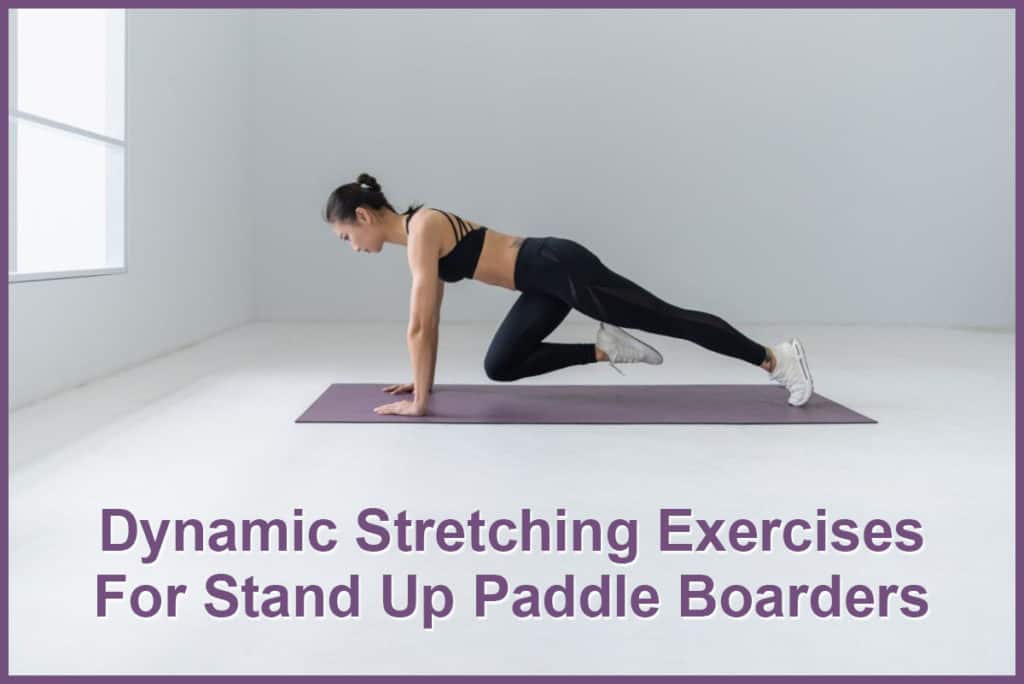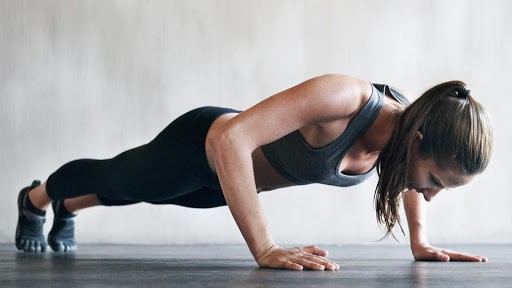Table of Contents
- What You Should Know About Dynamic Stretching And How To Prevent Stand Up Paddle Board Injuries
- Common Stand Up Paddle Board (SUP ) Related Injuries
- Causes and Prevention of Stand Up Paddle Board Related Injuries
- Mobility and Conditioning for SUP
- Dynamic Stretching for Stand Up Paddle Boarding
- Muscle Recovery After Stand Up Paddle Boarding
- Conclusion To Dynamic Stretching And Preventing Paddle Board Injuries
What You Should Know About Dynamic Stretching And How To Prevent Stand Up Paddle Board Injuries
In this article we will discuss how dynamic stretching can be used to prevent stand up paddle board injuries.
Originating in Hawaii in the 1950s, stand-up paddle boarding (SUP) is a combination of surfing and paddling. In recent years, SUP has become a common recreational and fitness activity.
SUP offers individuals all-round fitness, strength, and balance exercises that can be done by a range of abilities and people. However, like all sports, stand up paddle boarding does have a risk of you getting injured.
In this article, we will do a deep dive and look at how you can reduce the risk of injury when out on your paddle board.
Common Stand Up Paddle Board (SUP ) Related Injuries
SUP is a very accessible sport that can be done by almost anyone. Due to the variety of formats SUP provides, participants are rarely restricted by their physical capabilities.
Recreational stand up paddle boarding is the most common form of SUP providing a low-intensity, low-impact workout.
Then there are the more intense forms of stand up paddle boarding which include surfing, racing, touring, and yoga. Each format will place a different amount of strain on your body and therefore it poses varying levels of risk and injury.
Any form of exercise activity can increase your risk of injury, regardless of the intensity. This is because additional stress is placed on the body. In our everyday lives, our bodies have been conditioned to cope with their normal physical demands.
However, when abnormal stress is introduced our body is not physically prepared. Slowly adding stress enables us to adapt and therefore become fitter, but too much is overwhelming and this is where injuries can occur.
The most common forms of stand up paddle board related injuries are caused by paddle boarders overusing their bodies beyond their capabilities or acute board related traumas outside their physical control.
Here are other common injuries observed when out paddle boarding:
◉ Shoulder And Rotator Cuff Injuries
◉ Biceps Tendonitis
◉ Rhomboid & Trapezium Strains
◉ Knee Pain and Compartment Syndrome
◉ Hip Flexor and Adductor Tightness
◉ Lower Back
If you frequently are out stand up paddle boarding. You should be mindful of your overall strength and physical capabilities. Depending on the strength and flexibility of your muscles. The duration or intensity of your paddling could lead to these types of injuries.
When we overuse our muscles or do a lot of repetitive motions. We put ourselves at high risk of injury. Therefore we must condition ourselves to cope with the demands of our chosen SUP goals or practice prevention.
Causes and Prevention of Stand Up Paddle Board Related Injuries
As discussed, SUP related injuries often occur as a result of overuse or acute traumas. Our focus will be on overuse injuries and how they can be prevented.
In a study conducted on SUP injuries findings showed the shoulder, upper arm, lower back, and elbow was the most commonly injured body location, with injuries most often seen in the muscle and tendon.
Stand up paddle boarding relies heavily on our upper body for movement. Although SUP provides a full-body workout, the lower body generally remains in a static position to keep us balanced on the board, therefore providing little strain as a result of repetitive movement.
Our upper body is required to paddle, therefore putting our arms through a lot of long repetitive motions against the force of the water. Overuse upper body injuries associated with SUP can be caused by muscle imbalances and repetitive motion.
Paddling requires the use of both arms, each having their role to play. The arm on the handle pushes the blade down and back, whereas the arm on the shaft pulls the blade back.
Essentially, one arm is being used to push, and the other to pull. The push arm is using predominantly the shoulders, whereas the pull arm is using predominantly the back.
Therefore, different muscles are being worked by each arm during a stroke. Paddle boarders tend to favor a push and a pull arm for the majority of time on the water.
Over time, this can lead to strength imbalances with one side of the body is stronger than the other. Strength imbalances can lead to injury because your weaker side is not able to meet the demands of the stronger side.
Paddling can also be a strain on your body when you are paddling for longer or faster than your body is capable of. As a result, your muscles cannot cope with the demands and becomes injured.
SUP requires moving our arms through a large range of motion when paddling, this means putting our upper body muscles through a lot of strain, particularly with more intense forms of SUP including touring, racing, and surfing.
Forcing the paddle through the water adds a form of resistance to our working upper body muscles. If our arms are unable to control the movement throughout the stroke, we are putting ourselves at risk of injury, specifically, shoulder injury as our body cannot cope with the strain being placed on it.
Recreational paddling involves shorter, less powerful strokes in the water and therefore our range of motion does not have to be as strong throughout the movement.
However, recreational paddling still involves the resistance of the water and repetitive motions so it can still be an injury risk for those who cannot physically cope with it.
Mobility and Conditioning for SUP
Mobility exercises can help maintain equal strength, and build strength through a range of motion, therefore, reducing the risk of injury. When we talk about mobility, we are talking about moving our limb through its full range of motion.
Unlike flexibility, mobility requires controlled movement through our range of motion. Conditioning includes training performed to become fitter. When we move our arm through a stroke, we want to ensure our muscles can cope with the resistance throughout the movement.
As discussed, injury risk is high when we perform significantly more than we are physically capable of. Our goal when doing mobility and conditioning exercise is to very slightly surpassing our physical threshold, allowing for physical adaption rather than physical overuse.
Providing slight stress allows us to recover and adapt to physical activity, essentially how we become fitter. With greater fitness comes better performance, reduced injury and ability to cope with longer and more intense SUP sessions.
Dynamic Stretching for Stand Up Paddle Boarding
Performing a dynamic circuit before a SUP session or in your training will help strengthen your muscles, lose fat, reduce your risk of injury and improve your performance by increasing blood flow to the muscles and firing up your nervous system.
Here is an upper-body focused dynamic stretching circuit you can do at home or before heading out on the board:
10 Reps of Each Exercise:
◉ Arm Crossovers
◉ Arm Pull Aparts
◉ Tricep Dips (on a chair or bench)
◉ Press Ups
◉ Mountain Climbers
◉ Lateral Lunges
◉ Squat Jumps
Muscle Recovery After Stand Up Paddle Boarding
After a SUP session, we recommend performing a cool down as part of your recovery. The cool down helps lower your heart rate and relax the muscles, restoring your body to its relaxed state.
An effective cool-down will reduce muscular pain and stiffness, therefore reducing subsequent injury.
Here is an upper-body focused cool down circuit for you to do after your session:
1 min of Each Exercise:
- Arm Across Body Shoulder Stretch
- Overhead Triceps Stretch
- Side Bend
- Upper Back Stretch
- Standing Quadriceps Stretch
- Butterfly Stretch
Conclusion To Dynamic Stretching And Preventing Paddle Board Injuries
Just like any sport, stand up paddle boarding has its risk of injuries. Most commonly, boarders become injured as a result of working their bodies beyond their physical capabilities.
Mobility and conditioning exercises can help build your fitness level. Allowing you to go out for longer periods of time with more intense rides and without causing injury.
The nature of paddling involves working upper body muscles repetitively. Paddle boarders should pay extra attention to ensuring their upper body muscles are balanced and strong under a wide range of motion.
This can be done by implementing a variety of dynamic strengthening & stretching exercises in your training.
Finally, injury risk can be reduced with effective warm-up and cool-down exercises. Spend a little bit of time preparing and recovering the body between rides, to ensure you are giving your body what it needs to recover and adapt.
If you want to learn more about dynamic stretching and how to prevent paddle board injuries. Checkout the Metabolic stretching program. Click the image below to see what trainers are doing to keep you from getting injured during physical activity.
—————————————————————————————————-
Disclaimer:





